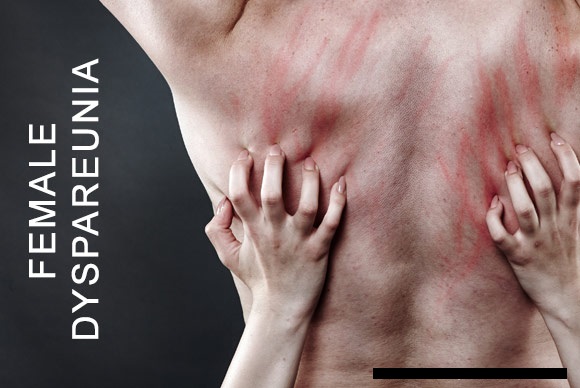Dyspareunia
Dyspareunia is a medical term that simply means ‘painful intercourse’. It is a general term used to describe all types of sexual pain. Sexual pain may occur upon penetration, during intercourse, and/or following intercourse. It can exist anywhere in the genital area – the clitoris, labia, or vagina, etc. The pain may be described as sharp, stinging, burning, bumping, cramping, or may be described in other ways.
The connection between dyspareunia and vaginismus
There are many causes of sexual pain (dyspareunia) and vaginismus is one of these. Vaginismus is uniquely characterized by involuntary tightness of the vagina due to the pubococcygeus (PC) muscles. With attempts at intercourse, vaginal tightness may cause sexual discomfort, sensations of burning, tightness, pain, or inability to penetrate.
Vaginismus is also closely related to any of the other forms of dyspareunia in that any type of general sex pain may trigger vaginismus. In these cases, vaginismus becomes a complicating discomfort or pain condition in addition to the original pain problem and typically remains even after the original problem is resolved or managed. A woman may, in fact, confuse the ongoing problems of vaginismus with the original pain problem, believing that the original problem is still unresolved.
“With any kind of sexual pain that is ongoing and seems to have no physical cause, vaginismus should be considered as a possible contributor or perhaps the primary cause.”
Diagnosing
treating sexual pain can become quite difficult when there are overlapping complications from vaginismus. It can be frustrating for both physicians and patients. Take, for example, a woman who experienced a temporary infection (one form of dyspareunia) that triggered vaginismus. Perhaps by the time a visit is made to a physician, the infection had resolved itself but the vaginismus remains. When the physician attempts to discover the source of the pain, there may seem to be no physical cause evident, since the patient continues to experience pain from vaginismus and no longer from the original infection. Moreover, the woman’s description of the pain may seem confusing since there were really two separate pain-causing issues at different times.

